64 Cores of Rendering Madness: The AMD Threadripper Pro 3995WX Review
by Dr. Ian Cutress on February 9, 2021 9:00 AM EST- Posted in
- CPUs
- AMD
- Lenovo
- ThinkStation
- Threadripper Pro
- WRX80
- 3995WX
CPU Tests: Office and Science
Our previous set of ‘office’ benchmarks have often been a mix of science and synthetics, so this time we wanted to keep our office section purely on real world performance.
Agisoft Photoscan 1.3.3: link
The concept of Photoscan is about translating many 2D images into a 3D model - so the more detailed the images, and the more you have, the better the final 3D model in both spatial accuracy and texturing accuracy. The algorithm has four stages, with some parts of the stages being single-threaded and others multi-threaded, along with some cache/memory dependency in there as well. For some of the more variable threaded workload, features such as Speed Shift and XFR will be able to take advantage of CPU stalls or downtime, giving sizeable speedups on newer microarchitectures.
For the update to version 1.3.3, the Agisoft software now supports command line operation. Agisoft provided us with a set of new images for this version of the test, and a python script to run it. We’ve modified the script slightly by changing some quality settings for the sake of the benchmark suite length, as well as adjusting how the final timing data is recorded. The python script dumps the results file in the format of our choosing. For our test we obtain the time for each stage of the benchmark, as well as the overall time.
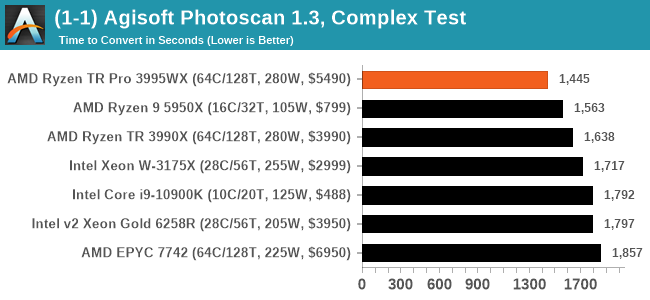
The high core count and high memory bandwidth put the wins onto AMD here, and the 3995WX is +13.3% faster compared to the standard Threadripper. The difference back to EPYC is +28.5%.
Application Opening: GIMP 2.10.18
First up is a test using a monstrous multi-layered xcf file to load GIMP. While the file is only a single ‘image’, it has so many high-quality layers embedded it was taking north of 15 seconds to open and to gain control on the mid-range notebook I was using at the time.
What we test here is the first run - normally on the first time a user loads the GIMP package from a fresh install, the system has to configure a few dozen files that remain optimized on subsequent opening. For our test we delete those configured optimized files in order to force a ‘fresh load’ each time the software in run. As it turns out, GIMP does optimizations for every CPU thread in the system, which requires that higher thread-count processors take a lot longer to run.
We measure the time taken from calling the software to be opened, and until the software hands itself back over to the OS for user control. The test is repeated for a minimum of ten minutes or at least 15 loops, whichever comes first, with the first three results discarded.
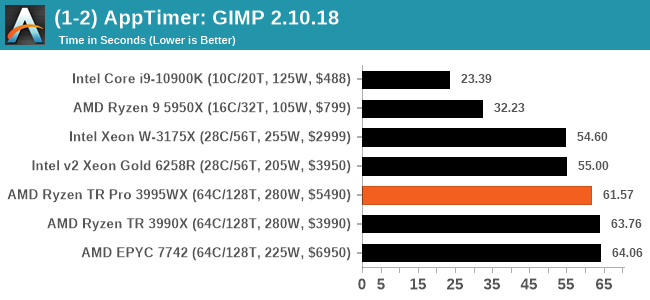
Our GIMP test here scales out with core count, so a 64C processor has 4x the work of a 16C processor. That means the smaller core-count parts take the win.
Science
In this version of our test suite, all the science focused tests that aren’t ‘simulation’ work are now in our science section. This includes Brownian Motion, calculating digits of Pi, molecular dynamics, and for the first time, we’re trialing an artificial intelligence benchmark, both inference and training, that works under Windows using python and TensorFlow. Where possible these benchmarks have been optimized with the latest in vector instructions, except for the AI test – we were told that while it uses Intel’s Math Kernel Libraries, they’re optimized more for Linux than for Windows, and so it gives an interesting result when unoptimized software is used.
3D Particle Movement v2.1: Non-AVX and AVX2/AVX512
This is the latest version of this benchmark designed to simulate semi-optimized scientific algorithms taken directly from my doctorate thesis. This involves randomly moving particles in a 3D space using a set of algorithms that define random movement. Version 2.1 improves over 2.0 by passing the main particle structs by reference rather than by value, and decreasing the amount of double->float->double recasts the compiler was adding in.
The initial version of v2.1 is a custom C++ binary of my own code, and flags are in place to allow for multiple loops of the code with a custom benchmark length. By default this version runs six times and outputs the average score to the console, which we capture with a redirection operator that writes to file.
For v2.1, we also have a fully optimized AVX2/AVX512 version, which uses intrinsics to get the best performance out of the software. This was done by a former Intel AVX-512 engineer who now works elsewhere. According to Jim Keller, there are only a couple dozen or so people who understand how to extract the best performance out of a CPU, and this guy is one of them. To keep things honest, AMD also has a copy of the code, but has not proposed any changes.
The 3DPM test is set to output millions of movements per second, rather than time to complete a fixed number of movements.
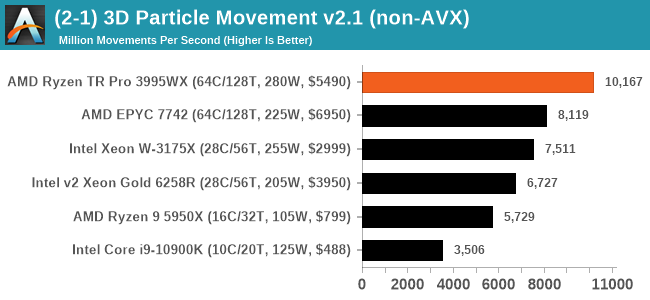
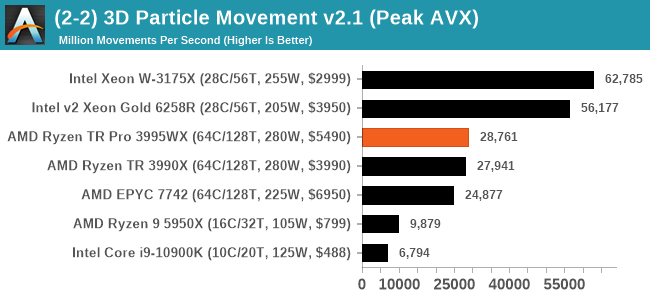
Over the EPYC 7742 we see a +15.6% in AVX mode, but a +25.2% gain in non-AVX mode. The Intel CPUs have AVX-512 which is why they sprint off in the peak AVX test.
y-Cruncher 0.78.9506: www.numberworld.org/y-cruncher
If you ask anyone what sort of computer holds the world record for calculating the most digits of pi, I can guarantee that a good portion of those answers might point to some colossus super computer built into a mountain by a super-villain. Fortunately nothing could be further from the truth – the computer with the record is a quad socket Ivy Bridge server with 300 TB of storage. The software that was run to get that was y-cruncher.
Built by Alex Yee over the last part of a decade and some more, y-Cruncher is the software of choice for calculating billions and trillions of digits of the most popular mathematical constants. The software has held the world record for Pi since August 2010, and has broken the record a total of 7 times since. It also holds records for e, the Golden Ratio, and others. According to Alex, the program runs around 500,000 lines of code, and he has multiple binaries each optimized for different families of processors, such as Zen, Ice Lake, Sky Lake, all the way back to Nehalem, using the latest SSE/AVX2/AVX512 instructions where they fit in, and then further optimized for how each core is built.
For our purposes, we’re calculating Pi, as it is more compute bound than memory bound. In single thread mode we calculate 250 million digits, while in multithreaded mode we go for 2.5 billion digits. That 2.5 billion digit value requires ~12 GB of DRAM, and so is limited to systems with at least 16 GB.
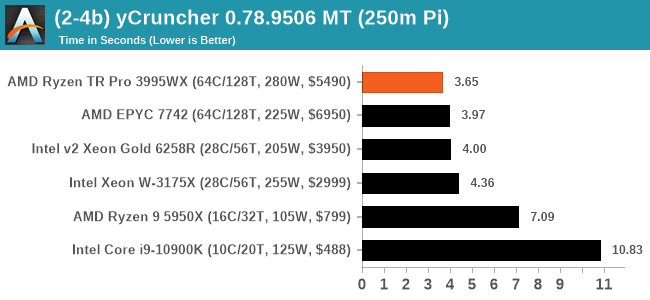
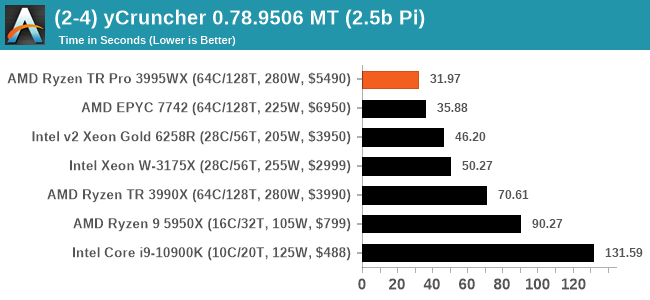
Further to the y-Cruncher sprint earlier in the review, our test here shows advantages for the systems with more memory channels as well as good mesh frequencies.
NAMD 2.13 (ApoA1): Molecular Dynamics
One of the popular science fields is modeling the dynamics of proteins. By looking at how the energy of active sites within a large protein structure over time, scientists behind the research can calculate required activation energies for potential interactions. This becomes very important in drug discovery. Molecular dynamics also plays a large role in protein folding, and in understanding what happens when proteins misfold, and what can be done to prevent it. Two of the most popular molecular dynamics packages in use today are NAMD and GROMACS.
NAMD, or Nanoscale Molecular Dynamics, has already been used in extensive Coronavirus research on the Frontier supercomputer. Typical simulations using the package are measured in how many nanoseconds per day can be calculated with the given hardware, and the ApoA1 protein (92,224 atoms) has been the standard model for molecular dynamics simulation.
Luckily the compute can home in on a typical ‘nanoseconds-per-day’ rate after only 60 seconds of simulation, however we stretch that out to 10 minutes to take a more sustained value, as by that time most turbo limits should be surpassed. The simulation itself works with 2 femtosecond timesteps. We use version 2.13 as this was the recommended version at the time of integrating this benchmark into our suite. The latest nightly builds we’re aware have started to enable support for AVX-512, however due to consistency in our benchmark suite, we are retaining with 2.13. Other software that we test with has AVX-512 acceleration.
This test also limits itself to 64 threads.
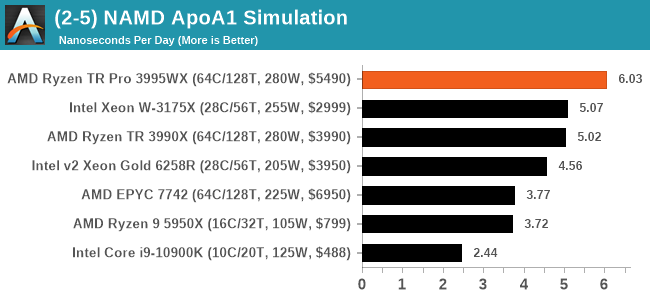
At the 64 thread limit, the 3995WX has a good +20% performance gain over the standard TR 3990X, although AMD claims a good 10 ns/day when the chip can process to its fullest.
AI Benchmark 0.1.2 using TensorFlow: Link
Finding an appropriate artificial intelligence benchmark for Windows has been a holy grail of mine for quite a while. The problem is that AI is such a fast moving, fast paced word that whatever I compute this quarter will no longer be relevant in the next, and one of the key metrics in this benchmarking suite is being able to keep data over a long period of time. We’ve had AI benchmarks on smartphones for a while, given that smartphones are a better target for AI workloads, but it also makes some sense that everything on PC is geared towards Linux as well.
Thankfully however, the good folks over at ETH Zurich in Switzerland have converted their smartphone AI benchmark into something that’s useable in Windows. It uses TensorFlow, and for our benchmark purposes we’ve locked our testing down to TensorFlow 2.10, AI Benchmark 0.1.2, while using Python 3.7.6.
The benchmark runs through 19 different networks including MobileNet-V2, ResNet-V2, VGG-19 Super-Res, NVIDIA-SPADE, PSPNet, DeepLab, Pixel-RNN, and GNMT-Translation. All the tests probe both the inference and the training at various input sizes and batch sizes, except the translation that only does inference. It measures the time taken to do a given amount of work, and spits out a value at the end.
There is one big caveat for all of this, however. Speaking with the folks over at ETH, they use Intel’s Math Kernel Libraries (MKL) for Windows, and they’re seeing some incredible drawbacks. I was told that MKL for Windows doesn’t play well with multiple threads, and as a result any Windows results are going to perform a lot worse than Linux results. On top of that, after a given number of threads (~16), MKL kind of gives up and performance drops of quite substantially.
So why test it at all? Firstly, because we need an AI benchmark, and a bad one is still better than not having one at all. Secondly, if MKL on Windows is the problem, then by publicizing the test, it might just put a boot somewhere for MKL to get fixed. To that end, we’ll stay with the benchmark as long as it remains feasible.
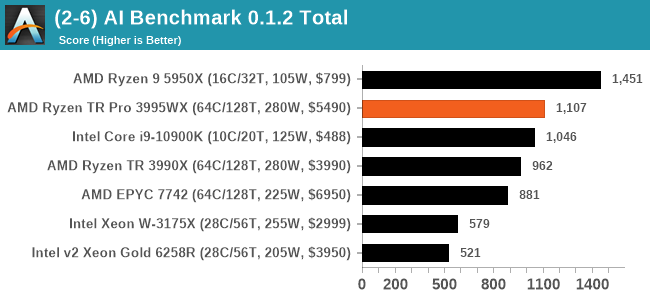


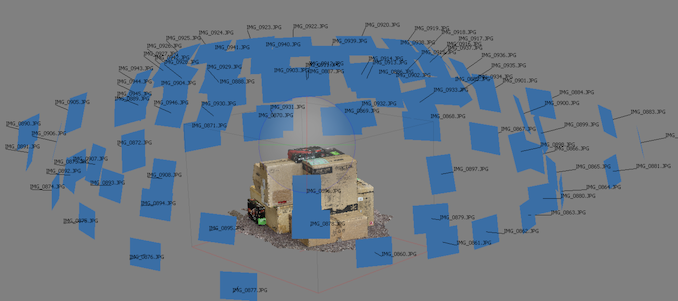

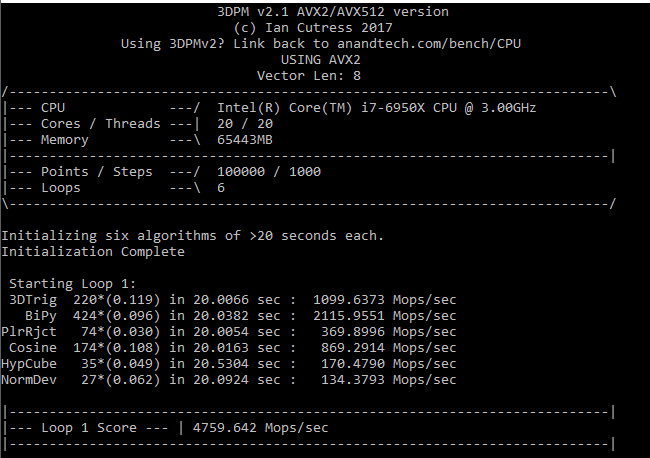
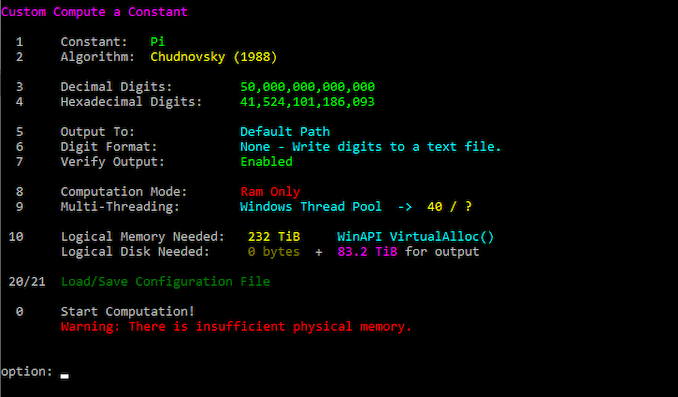
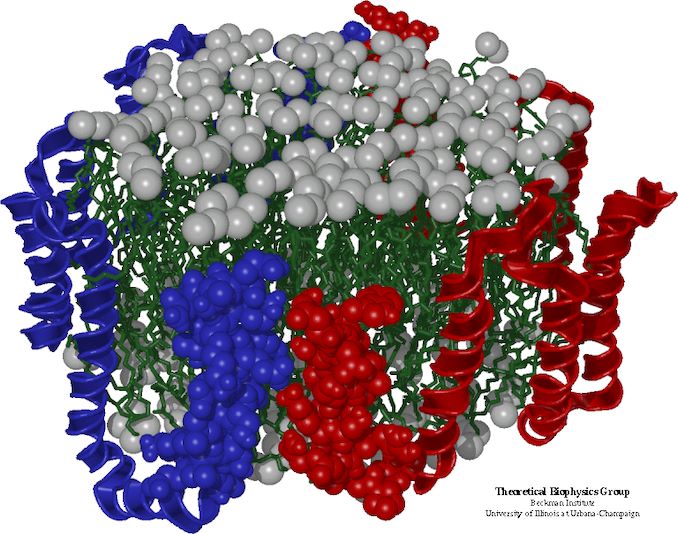









118 Comments
View All Comments
avb122 - Tuesday, February 9, 2021 - link
Those cases do not matter unless you are checking that the result is the same as a golden reference. Otherwise the image it creates is just as if the object it was rendering moved 10 micrometers. To our brain it not doesn't matter.Being off by one bit with FP32 for geometry is about the same magnitude as modeling light as a partial instead of a wave. For color intensity, one bit of FP32 is less than one photon in real world cases.
But, CPUs and GPUs all get the same answer when doing the same FP32 arithmetic. The programmer can choose to do something else like use lossy texture compression or goofy rounding modes.
avb122 - Tuesday, February 9, 2021 - link
It's not because of the hardware. AMD and NVIDIA's GPUs have IEEE complient FPUs. So, they get the same answer as the CPU when using the same algorithm.With CUDA, the same C or C++ code doing computations can run on the CPU and GPU and get the same answer.
The REAL reasons to not use a GPU are that the non-compete parts (threading, memory management, synchronization, etc.) are different on the GPU and not all GPUs support CUDA. Those are very good reasons. But it is not about the hardware. It is about the software ecosystem.
Also GPUs do not have a tiny amount of cache. They have more total cache than a CPU. The ratio of "threads" to cache is lower. That requires changing the size of the block that each "thread" operates on. Ultimately, GPUs have so much more internal and external bandwidth than a CPU that only extreme cases where everything fits in the CPUs' L1 caches buy not in the GPU's register file can a CPU have more bandwidth.
Ian's statement about wanting 36 bits so that it can do 12-bit color is way off. I only know CUDA and NVIDIA's OpenGL. For those, each color channel is represented by a non-SIMD register. Each color channel is then either an FP16 or FP32 value (before neural networks GPUs were not faster at FP16, it was just for memory capacity and bandwidth). Both cover 12-bit color space. Remember, games have had HDR for almost two decades.
Dug - Tuesday, February 9, 2021 - link
It's software.But sometimes you don't want perfect. It can work in your benefit depending on what end results you view and interpret.
Smell This - Tuesday, February 9, 2021 - link
Page 4
Cinebench R20
Paragraph below the first image
**Results for Cinebench R20 are not comparable to R15 or older, because both the scene being used is different, but also the updates in the code bath. **
I do like my code clean ...
alpha754293 - Tuesday, February 9, 2021 - link
It's a pity that the processor and as a platform, you can buy a used dual EPYC 7702 server and still reap the multithreaded performance of 128-cores/256-threads moreso than you would be able to get out of this processor.I'd wished that this review actually included the results of a dual EPYC 7702/7742 system for the purposes of comparing the two, as I think that the dual EPYC 7702/7742 would still outperform this Threadripper Pro 3995WX.
Duncan Macdonald - Tuesday, February 9, 2021 - link
Given the benchmarks and the prices, the main reason for using the Threadripper Pro rather than the plain Threadripper is likely to be the higher memory capacity (2TB vs 256GB) .Even a small overclock on a standard Threadripper would allow it to be faster than a non-overclocked Threadripper Pro for any application that fits into 256GB.
twtech - Tuesday, February 9, 2021 - link
There are a couple other pretty significant differences that matter perf-wise in some scenarios - the Pro has 8-channel memory support, and more PCIE lanes.Significant differences not directly tied to performance include registered ECC support, and management tools for corporate security, which actually matters quite a bit with everyone working remotely.
WaltC - Tuesday, February 9, 2021 - link
On the whole, a nice review...;)Yes, it's fairly obvious that one CPU core does not equal one GPU core, as comparatively, the latter is wide and shallow and handles fewer instructions, IPC, etc. GPU cores are designed for a specific, narrow use case, whereas CPU cores are much deeper (in several ways) and designed for a much wider use case. It's nice that companies are designing programming languages to utilize GPUs as untapped computing resources, but the bottom line is that GPUs are designed primarily to accelerate 3d graphics and CPUs are designed for heavy, multi-use, multithreaded computation with a much deeper pipeline, etc. While it might make sense to use both GPUs and CPUs together in a more general computing case once the specific-case programming goals for each kind of processing hardware are reached, it makes no sense to use GPUs in place of CPUs or CPUs in place of GPUs. AMD has recently made no secret it is divulging its GPU line to provide more 3d-acceleration circuitry and less compute circuitry for gaming, and another branch that will include more CU circuitry and less gaming-use 3d-acceleration circuitry. 'bout time.
The software rendering of Crysis is a great example--an old, relatively slow 3d GPU accelerator with a CPU can bust the chops of even WX3995 CPUs *if* the 3995WX is tasked to rendering Crysis sans a 3d accelerator. When the Crysis-engine talks about how many cores and so on it will support, it's talking about using a 3d accelerator *with* a general-purpose CPU. That's what the engine is designed to do, actually. Take the CPU out and the engine won't run at all--trying to use the CPU as the API renderer and it's a crawl that no one wants...;) Most of all, using the CPU to "render" Crysis in software has no comparison to a CPU rendering a ray-traced scene, for instance. Whereas the CPU is rendering to a software D3d API in Crysis, ray-tracing is done by far more complex programming that will not be found in the Crysis engine (of course.)
I was surprised to read that Ian didn't think that 8-channel memory would add much of anything to performance beyond 4-channel support....;) Eh? It's the same principle as expecting 4-channel to outperform 2 channel, everything else being equal. Of course, it makes a difference--if it didn't there would be no sense in having 3995WX support 8 channels. No point at all...;)
Oxford Guy - Tuesday, February 9, 2021 - link
Yes, the same principle of expecting a dual core to outperform a single core — which is why single/core CPUs are still dominant.(Or, we could recognize that diminishing returns only begin to matter at a certain point.)
tyger11 - Tuesday, February 9, 2021 - link
Definitely waiting for the Zen 3 version of the 3955X. I'm fine with 16 cores.